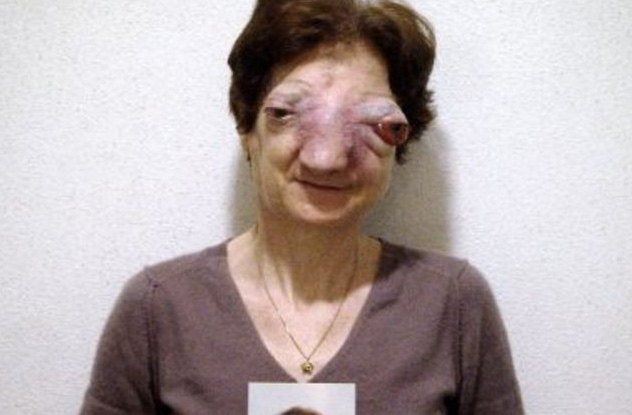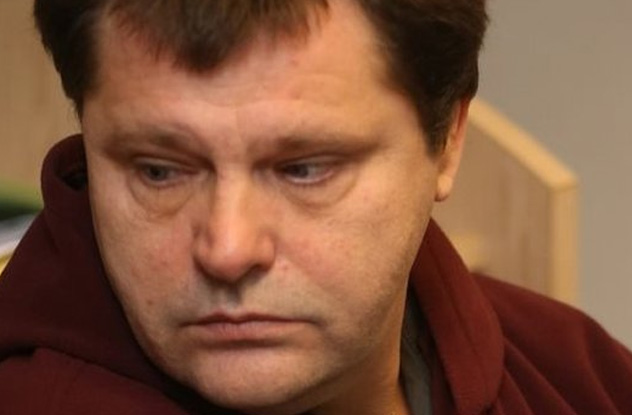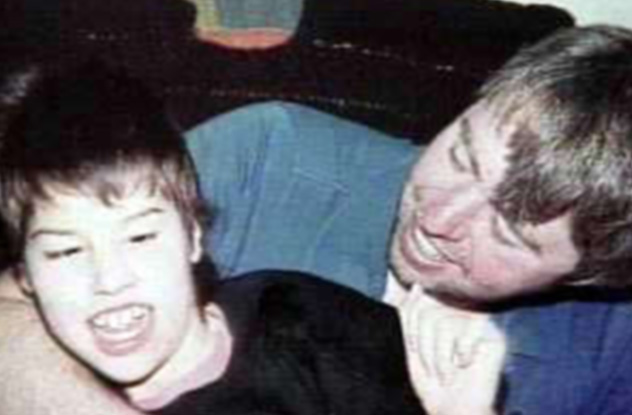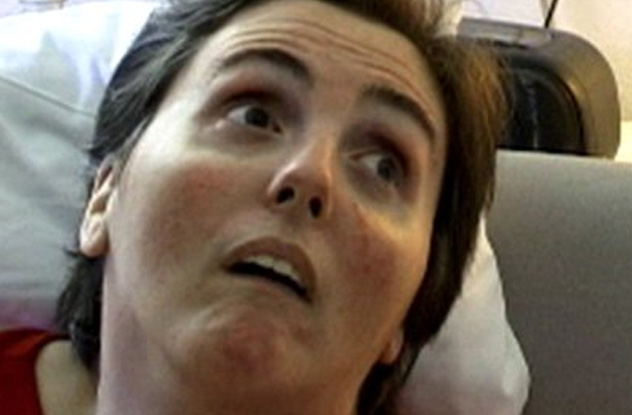Currently, euthanasia is only legal in Holland, Belgium, and Luxembourg, while assisted suicide is allowed in Albania, Colombia, Germany, Japan, and Switzerland and in five US states—Montana, New Mexico, Oregon, Vermont, and Washington. However, other countries and states are looking into legalizing such practices.
10Brittany Maynard
Brittany Maynard was 29 when she found out she was going to die. In April 2014, she was diagnosed with a malignant brain tumor that would kill her in six months. It was incurable. She could have prolonged her life through full radiation treatment, but she would die painfully while all those around her watched her deteriorate. This was not the way Brittany wanted to go. She had only been married a year and wanted to start a family. However, death is inevitable, and Brittany’s was happening sooner than anyone would have liked. So, looking at the possibilities of a slow death marred with tremendous headaches, seizures, and memory loss, she chose to move from California to Oregon where assisted suicide is legal. Funded by donations, Brittany was able to check all the items off her bucket list, which included visiting Alaska and Yellowstone National Park. The last item on her list was a visit to the Grand Canyon, which she did October 21. Brittany died on November 1, two days after her husband’s birthday, surrounded by her loved ones in her home in Portland. Religious groups, particularly the Catholic Church, strongly opposed Maynard’s decision and assisted suicide in general. One official called it “absurd.” Other critics say she was too hasty with her decision. However, as Brittany pointed out, she wasn’t getting better, so when exactly is the right time to die?
9Bernard Heginbotham
By 2004, Bernard and Ida Heginbotham had been married 67 happy years. Together, the couple had six sons. Bernard, who was 100 years old, had been taking care of his 87-year-old ailing wife for some time. After several falls, Ida was transferred to a series of nursing homes as her health worsened. All the while, Bernard supported his wife as much as he could and visited her every day. In April 2004, Bernard got a call from his eldest son, saying that Ida would have to be moved to yet another home. So on April 14, 2004, Bernard, who was a devoted church attendee and retired butcher, took a knife from the couple’s bungalow. He walked to the home. As the elderly couple sat alone in Ida’s room, he slit her throat. He then left the home and tried to kill himself. He was stopped and arrested. Bernard was charged with murder, making him the oldest person to be charged with murder in England’s history. He pleaded guilty to manslaughter on the grounds of diminished responsibility and received a year of probation.
8Danny Bond
Danny Bond was born 12 weeks early In Southampton, England. It was the start of a lifelong battle with illness. When he was still in the special baby unit in the hospital, he developed an infection in his bowel lining. No one knew what the problem was until he was 11 years old. As a result of his illness, Bond never spent more than a few months outside of the hospital. He only celebrated two birthdays and two Christmases at home. During his 20 years, he endured over 300 surgeries and suffered almost every day. By the time he was 13, he started talking about wanting to die. He tried to commit suicide twice on his own, but his mother revived him each time. Once he was 21, Danny was getting sicker and was put in the hospital. This time, he decided that he wasn’t going to leave. His life had just become too much. However, the only legal way for Bond to kill himself while in the hospital was to starve himself. Against the wishes of doctors, his mother and stepfather watched him die slowly over the course of days. Bond died at the age of 21 in July 2002.
7Godelieva De Troyer
Many noteworthy euthanasia cases happen in Belgium, which has some of the most open euthanasia policies in the world. For example, people do not have to be terminally ill, and there is no minimum age for someone to be euthanized. One of the most controversial cases was the death of 64-year-old Godelieva De Troyer, who was suffering from severe depression. In early 2012, De Troyer reached out to her estranged son, Tom Mortier, saying she had contacted officials about being euthanized. Mortier didn’t think much of it because while he knew that euthanasia was legal, he didn’t think his mother would qualify for assisted suicide because she was not physically ill. In April, while at work, he got a message to call his wife. He was shocked when she told him that his mother had been euthanized the day before, and he needed to pick up her body. Mortier hadn’t been told about the suicide in advance because of disclosure rules. Since his mother’s death, Mortier has been a strong, vocal critic of legalized euthanasia.
6The Belgian Twins
For deaf people, vision becomes even more important because they depend on it for nearly everything. But in 2013, two 45-year-old twins in Belgium were facing the reality of going blind after already being deaf. Instead of enduring that, the twins decided to end their lives. The case was unusual at the time, because they were not sick or in pain. They simply did not want to face such an awful fate. On December 14, 2013, they had coffee together and said goodbye to their brother and their parents. Then they went into their room, gave each other a little wave, and went gently into that good night.
5Chantal Sebire
Chantal Sebire was a retired teacher and mother of three living in Plombieres-les-Dijon, France. In 2000, she was diagnosed with esthesioneuroblastoma, a rare form of cancer that hits the nasal cavity. The cancer spreads through the face, disfiguring victims. It also blinds them and leaves them without a sense of smell or taste. Finally, the cancer gets into the brain and kills the individual. Sebire knew the cancer would kill her over the course of years in a very painful and grotesque way that didn’t allow her to even venture out in public. Her disfigurement was quite profound; people stared, and children ran away in fear. In 2008, she asked the French court for assistance with suicide. She was denied. In 2005, France had passed a law saying that it could withhold treatment to a terminally ill patient, but a doctor couldn’t actively participate in the death. On March 17, she lost the right for assistance in her death. Two days later, her body was found in her home. She had died two days earlier from an overdose of pentobarbital, which is not stocked by French pharmacies. The drug is used in Switzerland, Belgium, and the US state of Oregon for the purposes of euthanasia.
4Frank Van Den Bleeken
Frank Van Den Bleeken has spent 30 years in a Belgian prison. He has a long history of sexual assaults, and he murdered a 19-year-old woman in 1989. He was released after seven years in prison; however, in a span of three weeks, he assaulted three more victims, including an 11-year-old girl. Those crimes landed him an indefinite sentence, and he knows he will never get out. He calls himself a danger to society. He has asked for therapy but claims to have never received adequate treatment. Interestingly enough, Belgium got rid of the death penalty in 1996, but in 2002, they passed a euthanasia law that doesn’t require the person to be terminally ill. So in 2011, Van Den Bleeken applied for his right to die. He said that being locked up was “unbearable psychological suffering.” In mid-September 2014, Van Den Bleeken was granted his wish and was allowed to die by euthanasia. He said he expects to die any day, but at the time of this writing, he has yet to be euthanized. Van Den Bleeken’s case was a first in Belgium and paved the way for 15 other criminals who are also appealing for their own death.
3Tracy Latimer
November 23, 1980, during Tracy Latimer’s birth near her home in Wilkie, Saskatchewan, there was an interruption in oxygen to her brain; this left her with severe cerebral palsy. Functionally, she only developed to the stage of most three-month-old infants. She couldn’t walk or talk, and she was fairly non-responsive, although she did like affection. The most she did was smile, though only occasionally. Beyond that, Tracy was also in constant pain. She had several operations performed on her. Just before her 13th birthday, Tracy was set to go for surgery to have one of her thigh bones removed. Her father, Robert Latimer, was tired of seeing his child suffer like that. On October 24, 1993, while his wife and three other children were at church, Robert put Tracy in the cab of his truck and then attached a hose to the exhaust pipe. He watched through the back window as Tracy died of carbon monoxide poisoning. He then placed her body in her bed. The police investigated, and Robert confessed to taking his daughter’s life. He was charged with first-degree murder but was convicted of second-degree murder and spent 10 years in prison. He was released in 2011 on parole. When asked in 2011 if he regrets what he did, he said he wouldn’t go back and change his actions, except to take his pregnant wife to a different hospital.
2Terri Schiavo
On February 25, 1990, 26-year-old Terri Schiavo collapsed in the hallway of the apartment she shared with her husband, Michael Schiavo. It is unclear what caused her to lose consciousness, but she did have abnormally low potassium levels. While she was unconscious, insufficient oxygen reached her brain. Though doctors revived her, the only thing she could do was breathe on her own. The doctors said she had no thoughts or emotions. Her body was alive, but everything else was gone. In 1998, Michael said the feeding tube should be pulled; that is what she would have wanted. Her parents, Robert and Mary Schindler, instead said she would have chosen to remain on the feeding tube because they thought she might wake up from her persistent vegetative state. The parents and the husband battled over Terri’s life for the next seven years. The courts sided with Michael, but the parents appealed, prolonging Terri’s life. In 2005, in the last appeal, five doctors testified, two chosen by Michael, two by the Schindlers, and one by the court. The Schindlers’ doctors said there was a chance she could wake up. The other three said that there was no chance, and Terri would remain in a coma until death. In early 2005, when the final appeal was lost, the case made international headlines. Everyone from President Bush to South Park weighed in on the issue. The feeding tube was removed on March 18, 2005, and Terri died just under two weeks later on March 31. After she died, an autopsy showed that the brain damage had been irreversible, and she would never have woken up.
1Ramon Sampedro
In August 1968, Ramon Sampedro was 25 years old. He was a fisherman, set to be married, and he dove one day into a shallow area of the ocean near his home in the Galicia region of Spain. The dive broke his back, paralyzing him from the neck down. Sampedro lay in a bed until 1993, when he decided he was ready to die. He considered his infliction to be a form of slavery, and he looked at himself as a live head on a corpse. If he could have, he would have taken his own life, but he couldn’t in a dignified and peaceful way due to his paralysis. He also couldn’t find anyone to help him take his own life—assisted suicide was illegal in Spain and carries a penalty of 20 years. The problem was that Sampedro was so full of life that he was inspiring. He was incredibly passionate about his cause. He wrote poetry; he read Franz Kafka and Oscar Wilde. He wrote to members of the Spanish government, using a pen in his mouth. All of his letters were collected in book form, entitled Letters from Hell. He was a dynamic and articulate man, which made it even harder to grant him his wish of death. Despite not winning his legal battle, on January 12, 1998, Sampedro took his own life with the aid of an unknown person. He said, “When I drink this, I will have renounced the most humiliating of slaveries: being a live head stuck to a dead body.” Then, through a straw, he drank water mixed with cyanide. At the age of 55, a quadriplegic for 29 of those years, Sampedro got his wish and died peacefully. The case was huge in Spain, even more so when a clip from Sampedro’s 50-minute-long suicide video aired on a Spanish news program. While it did not show the death itself, it did show Sampedro sipping the water that killed him. Sampedro’s life was the basis for an Oscar-nominated movie starring Javier Bardem, called The Sea Inside. Robert Grimminck is a Canadian crime-fiction writer. You can follow him on Facebook, on Twitter, or visit his website.
























